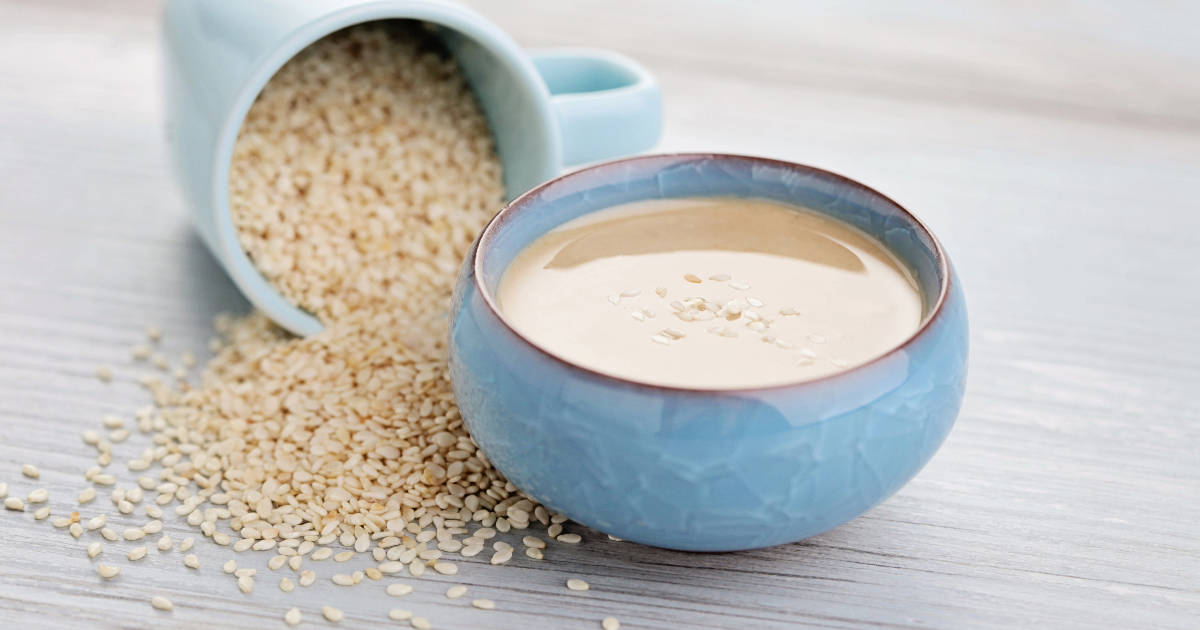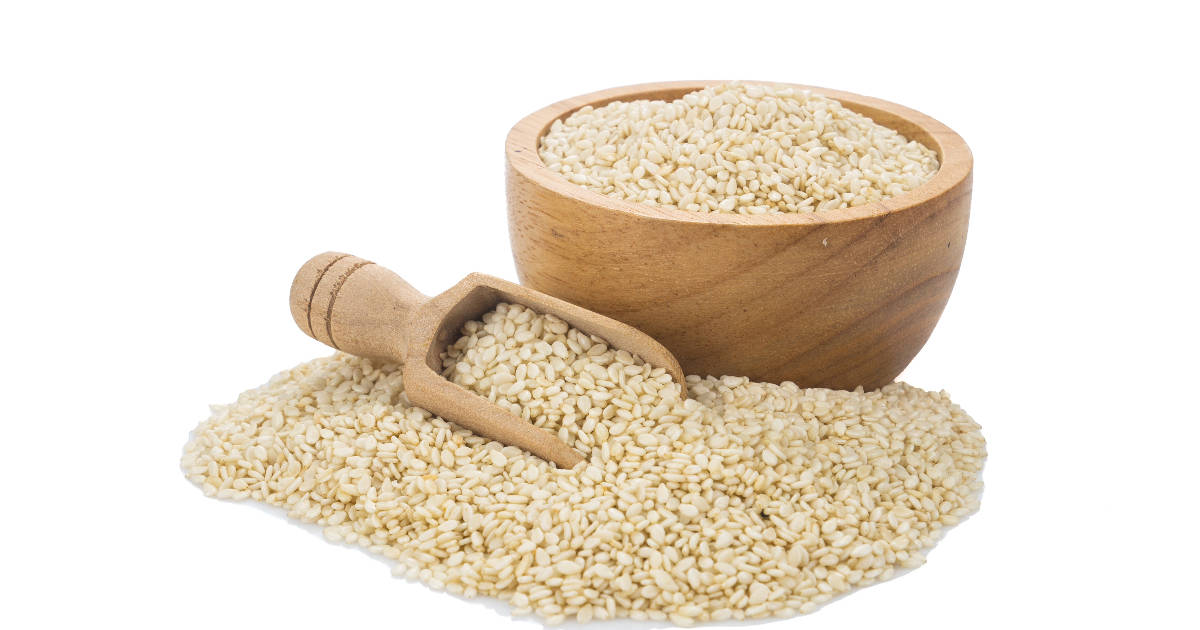Almond butter and tahini are both delicious nut-based spreads that can add flavor, creaminess, and nutrition to a variety of dishes.

But with their differing ingredients and nutritional profiles, you may be wondering which one is best for your needs.
A Brief Overview of Almond Butter and Tahini
Almond butter is made by grinding almonds into a smooth, creamy paste. It has a mildly nutty flavor and can range from crunchy to smooth in texture. Almond butter has grown increasingly popular in recent years as a plant-based alternative to peanut butter.
Tahini is a paste made from ground sesame seeds that has been used in Middle Eastern cuisine for centuries. It has a more pronounced nutty, earthy taste compared to almond butter. Tahini is a key ingredient in hummus but can also be used on its own as a spread.
Both spreads are plant-based, vegan, and gluten-free. Let's take a closer look at how they differ.
Nutritional Profile: Almonds vs. Sesame Seeds
Since almond butter and tahini come from different base ingredients, their nutritional profiles vary significantly.
Almonds are rich in:
- Vitamin E - An antioxidant that protects cells from damage.
- Magnesium - Supports nerve, muscle, and bone health.
- Fiber - Improves digestion and heart health.
- Protein - Important for building and repairing tissues.
Sesame seeds are high in:

- Copper - Helps form red blood cells and bones.
- Calcium - Essential for bone health.
- Iron - Transports oxygen in the blood.
- Zinc - Boosts immunity and wound healing.
So while both provide important nutrients, almonds offer more vitamin E and magnesium, while sesame seeds provide more calcium, iron, and zinc.
Calories and Fat Content
When comparing calories and fat in almond butter and tahini, almond butter tends to be higher in both.
Here's the breakdown per 2 tablespoons:
- Almond butter: 200 calories, 18g fat
- Tahini: 178 calories, 16g fat
So Tahini has the edge if you're looking for a lower calorie, lower fat option.
However, the fats found in both are primarily heart-healthy unsaturated fats. Almond butter offers more monounsaturated fat, while tahini provides more polyunsaturated fat.
Protein Content
Almond butter wins when it comes to protein content.
2 tablespoons of almond butter has about 8g of protein compared to 4g in tahini. So almond butter can help keep you fuller for longer.
If you're looking to add plant-based protein to smoothies, overnight oats, or snacks, almond butter is the better choice.
Carbohydrates
Carb content is fairly similar between the two spreads.
Per 2 tablespoons, almond butter has 8g of carbs and 7g of fiber compared to 10g of carbs and 4g of fiber in tahini.
So in terms of net carbs, almond butter comes out slightly lower at just 1g versus 6g in tahini.
Vitamins and Minerals
As mentioned earlier, almond butter offers more vitamin E and magnesium compared to tahini.
But tahini contains more iron, calcium, zinc, and copper.
So if you're looking to increase calcium and iron intake in particular, tahini has the advantage.
Flavor and Texture
There are some clear differences when it comes to flavor and texture:
- Almond butter - Mildly nutty, slightly sweet flavor. Smooth and creamy texture.
- Tahini - Strong earthy, sesame flavor. Slightly thick and dense texture.
So if you prefer a nuttier, bolder flavor, tahini is the way to go. For something more mild and sweet, choose almond butter.
Almond butter also tends to be easier to spread compared to the dense tahini paste.
Cost and Convenience
Tahini tends to be more affordable than almond butter. You can often find large tubs of tahini for under $10, while almond butter costs $12-$15 on average for a smaller jar.
Both spreads can be found at most major grocery stores, so convenience and availability are similar. Natural food stores will offer a wider selection of each.
Making your own at home is easy for both. But almond butter requires just 2 ingredients - almonds and salt - compared to 3 for tahini - sesame seeds, oil, and salt.
Uses in Cooking and Baking
When it comes to uses in the kitchen, both almond butter and tahini are versatile ingredients. Here are some of the top ways to use each:
Almond Butter
- Smoothies - Adds nutrition and creaminess
- Overnight oats - For extra protein
- Toast or sandwiches - As a spread
- Cookies - For a nutty flavor
- Stir fries - As a sauce thickener
Tahini
- Hummus - As the key ingredient
- Salad dressings - For added nuttiness
- Marinades - To add creaminess
- Desserts - Like halvah or cookies
- Sauces - To thicken and add flavor
So while both can be used in sweet and savory dishes, almond butter's milder flavor makes it better for smoothies, oats, and toast.
Tahini's bold, nutty flavor shines through in hummus, dressings, and sauces.
Health Benefits
Both spreads offer important nutrients and health benefits. Here are some of the top benefits of each:
Almond Butter
- High in vitamin E to protect cells
- Magnesium supports heart and bone health
- May help reduce "bad" LDL cholesterol
- Fiber aids digestion and gut health
Tahini
- Calcium strengthens bones
- Iron improves blood health
- Zinc boosts immunity
- Copper helps produce red blood cells
The high vitamin E content makes almond butter great for healthy skin and hair, while tahini's iron and calcium benefits pregnancy and growth.
Which Is Healthier Overall?
Based on their comprehensive nutritional profiles, both spreads can be part of a healthy diet.
But almond butter does seem to have an edge when it comes to specific benefits:
- Higher in protein to improve satiety
- More vitamin E than nearly any other nut or seed
- Lower in net carbs and higher in fiber
- Higher amounts of magnesium and monounsaturated fats
Just 2 tablespoons of almond butter meets 50% of your vitamin E needs for the day.
So for the average person looking to pick the healthier choice, almond butter wins out slightly. But both offer unique advantages.
Almond Butter vs. Tahini: Quick Comparison
| Nutrient | Almond Butter | Tahini |
|---|---|---|
| Base ingredient | Almonds | Sesame seeds |
| Texture | Smooth, creamy | Thick, dense |
| Flavor | Mildly nutty, slightly sweet | Strong earthy, sesame taste |
| Fat content | 18g per 2 Tbsp | 16g per 2 Tbsp |
| Protein | 8g per 2 Tbsp | 4g per 2 Tbsp |
| Net carbs | 1g per 2 Tbsp | 6g per 2 Tbsp |
| Fiber | 7g per 2 Tbsp | 4g per 2 Tbsp |
| Key vitamins | Vitamin E | Iron, calcium |
| Cost | $$ | $ |
| Best uses | Smoothies, oats, toast | Hummus, dressings, sauces |
| Health benefits | Vitamin E, magnesium, cholesterol | Calcium, iron, immunity |
FAQs
Which is better in smoothies?
Almond butter. Its milder flavor works better blended into smoothies compared to tahini's strong sesame taste.
Can tahini be substituted for almond butter when baking?
Not always. Tahini's dense texture and bold flavor may overpower some baked goods. Almond butter is a safer bet for baking.
Is one better than the other for weight loss?
Tahini is slightly lower in calories and fat, but almond butter offers more protein and fiber to keep you full. For weight loss, calories and portions matter most.
Which is healthier for kids?
Almond butter's mild taste and smooth texture make it a good nut butter choice for kids. Always supervise young children to prevent choking.
Can you be allergic to one but not the other?
Yes, allergies to tree nuts like almonds are distinct from sesame allergies. But those with multiple food allergies should exercise caution.
Conclusion
Both almond butter and tahini can be part of a healthy diet. Almond butter offers more protein, vitamin E, and magnesium, making it a slight winner overall.
But tahini provides its own unique benefits, like more calcium, iron, and zinc. Its bold, earthy taste also sets it apart from almond butter.
The best nutty spread for you depends on your specific nutritional needs and taste preferences. Try out both almond butter and tahini to see which you enjoy more!

